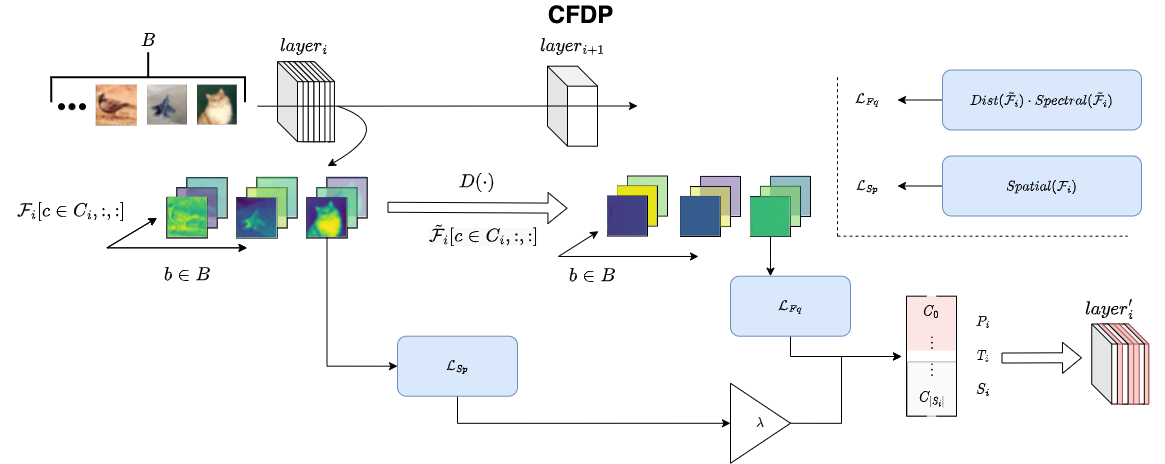
As the saying goes, sometimes less is more -- and when it comes to neural networks, that couldn't be more true.
Enter pruning, the art of selectively trimming away unnecessary parts of a network to create a more streamlined, efficient architecture. In this paper, we introduce a novel end-to-end pipeline for model pruning via the frequency domain. This work aims to shed light on the interoperability of intermediate model outputs and their significance beyond the spatial domain. Our method, dubbed Common Frequency Domain Pruning (CFDP) aims to extrapolate common frequency characteristics defined over the feature maps to rank the individual channels of a layer based on their level of importance in learning the representation. By harnessing the power of CFDP, we have achieved state-of-the-art results on CIFAR-10 with GoogLeNet reaching an accuracy of 95.25%, that is, +0.2% from the original model. We also outperform all benchmarks and match the original model's performance on ImageNet, using only 55% of the trainable parameters and 60% of the FLOPs. In addition to notable performances, models produced via CFDP exhibit robustness to a variety of configurations including pruning from untrained neural architectures, and resistance to adversarial attacks.
@InProceedings{Khaki_2023_CVPR,
author = {Khaki, Samir and Luo, Weihan},
title = {CFDP: Common Frequency Domain Pruning},
booktitle = {Proceedings of the IEEE/CVF Conference on Computer Vision and Pattern Recognition (CVPR) Workshops},
month = {June},
year = {2023},
pages = {4714-4723}
}